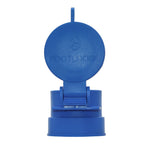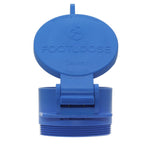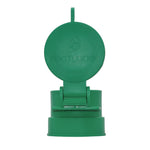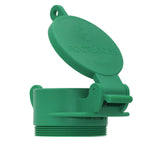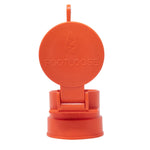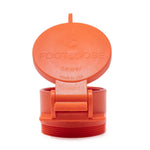You have no items in your shopping cart.
Lured by the dream of starry campsites, wild and rugged coastlines, serene beach sunsets, and miles of open road, more than 46 million Americans reported plans to take an RV trip during the pandemic. According to data from the RV Industry Association, RV suppliers saw a 170 percent increase in first-time RV buyers during the second half of 2020—a number that is only expected to continue to climb in the next five years.

Have you, like many Americans, heard the call of an RV adventure? If you have begun your search for the rig of your dreams, you’ve likely discovered that RVs come in an array of types, styles, sizes, and price points.
To help you identify the best kind of RV for your unique needs, preferences, and adventure style, we’ve created an expert guide to the seven primary types of RVs—complete with pros and cons, special considerations, and more. Check it out:
Class A RVs
The largest motorized RVs on the market, Class As are hulking vehicles powered by gasoline or diesel engines. With roomy sleeping quarters and lounging areas, full kitchens, and deluxe bathrooms, Class A RVs can pack in plenty of luxuries—like residential-size fridges, induction stoves, ice makers, microwaves, washer-dryers, high-tech electronics, and designer furniture.
Pros:
- Passengers can access the bathroom and fridge while the vehicle is in motion
- Potential for virtually limitless amenities
- Plenty of storage, sleeping, and living space
- Can tow everyday vehicles
Cons:
- May require a special license in some states
- Can be tricky to drive and park
- More expensive to insure, fuel, and repair
- Tall height can make low branches and bridges problematic
Class C RVs
Somewhat confusingly, Class C RVs are smaller than Class A RVs but bigger than Class B RVs. Class C vehicles typically have a sleeping area or storage space that extends over the cab.
Pros:
- Shorter length and height means easier maneuverability
- Passengers can access the bathroom and fridge while the vehicle is in motion
- Can offer similar amenities to Class A
- Most models include one slide-out for extra living space and storage
- Some models can tow ATVs, kayaks, bikes, etc.
Cons:
- Typically cannot tow vehicles
- New drivers may find it tricky to drive and park
- Expensive to insure, fuel, and repair
Class B RVs
Also called camper vans, Class B RVs are the smallest of the motorized recreational vehicles and look and drive much like a van. Class Bs typically come with a more snug living space, but their compact space makes them easy to drive and more affordable to maintain.
Pros:
- Easy to maneuver and park
- Can fit into standard driveway many garages
- Passengers can access the bathroom and fridge while the vehicle is in motion
- More affordable to insure, fuel, and repair
- Can be used on day trips and errands
- Some models include kitchens and bathrooms
Cons:
- Less space and fewer amenities than Class A & C
- Small water tanks
- Vintage models can be expensive to insure
Travel trailer

Also called conventional trailers or bumper-pulls, travel trailers connect to a standard hitch mounted on the rear bumper or frame of your vehicle. Designed to be pulled by everyday cars and trucks, travel trailers come in a wide range of sizes and weights—from less than 4,000 to more than 10,000 pounds.
Pros:
- Easy to unhitch and store when not in use
- Can be towed by everyday vehicles
- Huge variety of styles, sizes, and weights
- More affordable than motorized RVs
Cons:
- Difficult to drive in reverse
- Limited passenger space during travel
- May have fewer amenities than large motorized RVs
- Not compatible with all vehicles and hitches
- May lack adequate insulation/AC for extreme temperatures
Fifth-wheel trailers
Sometimes called fivers, fifth-wheel trailers are attached to a U-shaped coupling mounted onto the cargo bed of large pickup trucks. Because the hitch connects to the bed of a truck rather than at the bumper, fifth-wheel campers can be larger and often feel more secure than other types of trailers.
Fifth wheels have a second level that juts out over the bed of a pickup truck, typically containing a bedroom accessed by a small set of stairs. Roomy with tall ceilings and home amenities, fifth-wheel campers have a modern, residential feel.
Pros:
- Largest trailers you can tow behind a vehicle
- Easy to unhitch and store when not in use
- Roomy with lots of storage space
- Very stable to tow and turn
- Can include several slide outs for living spaces, bathrooms, wardrobes, and multiple bedrooms
Cons:
- Difficult to drive in reverse
- Requires a pickup truck with a specifically fitted hitch
- Bedroom may be difficult to access for people who can’t climb steps
- Temperature can be difficult to control due to varying heights
- Usually more expensive than travel trailers
- Tall height can make low branches and bridges problematic
Truck campers
Sometimes called slide-ins or cab-overs, truck campers can be attached over the bed of a pickup truck, effectively transforming the truck into an RV. Truck campers usually sleep up to three travelers and include basic cooking, dining, storage, and bathroom facilities.
Pros:
- Easy to drive
- Suitable for off-roading
- Affordable to insure, fuel, and repair
- Can be removed and stored when not in use
Cons:
- Limited amenities and living space
- Some models don’t have bathrooms
- Not practical to detach for short errands or day trips
Popup trailer

Also called an expandable trailer or a folding trailer, popup trailers feature a hard base with soft-sided popout sections that add extra living space once you’ve parked. Popup trailers typically have a living space in the center and two sleeping areas on either side.
Pros:
- Lightweight and easy to tow
- Open-air, camping feel
- Inexpensive
Cons:
- Can be tedious to set up and takedown
- Minimal to no insulation
- Most do not feature bathrooms
- Tent enclosure offers minimal security
Now that you know these RV terms, take a look at our other great content for RVers. When it comes to Rv'ing you need to know about maintenance and repairs.



